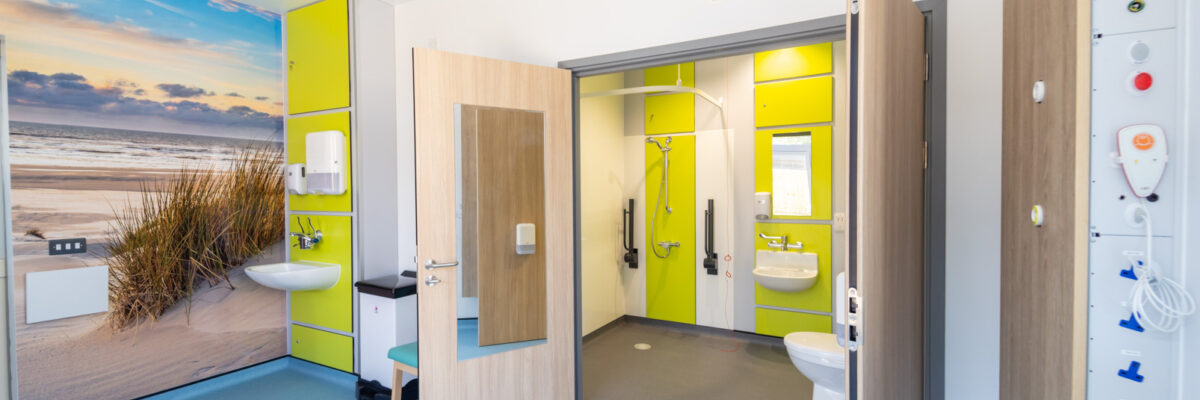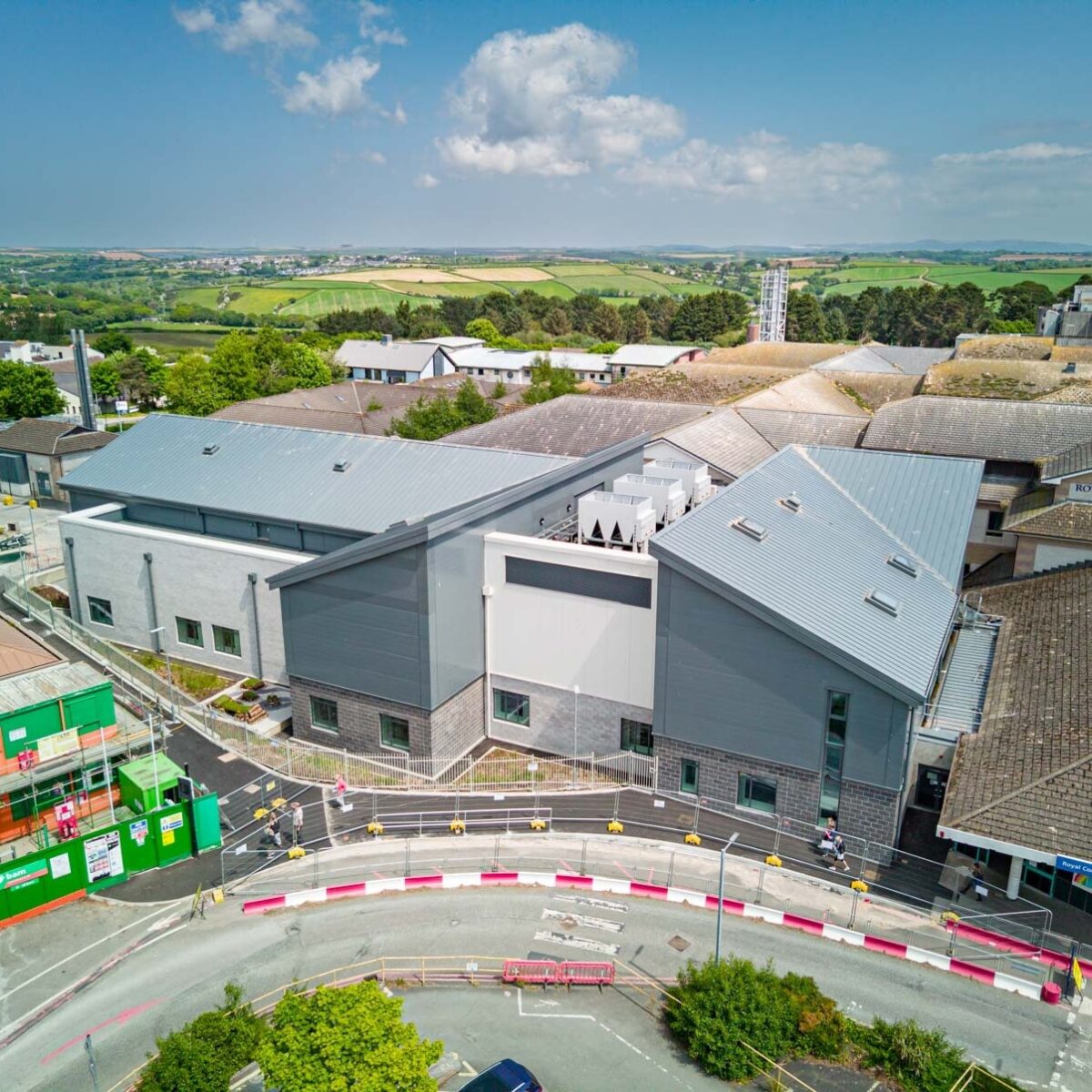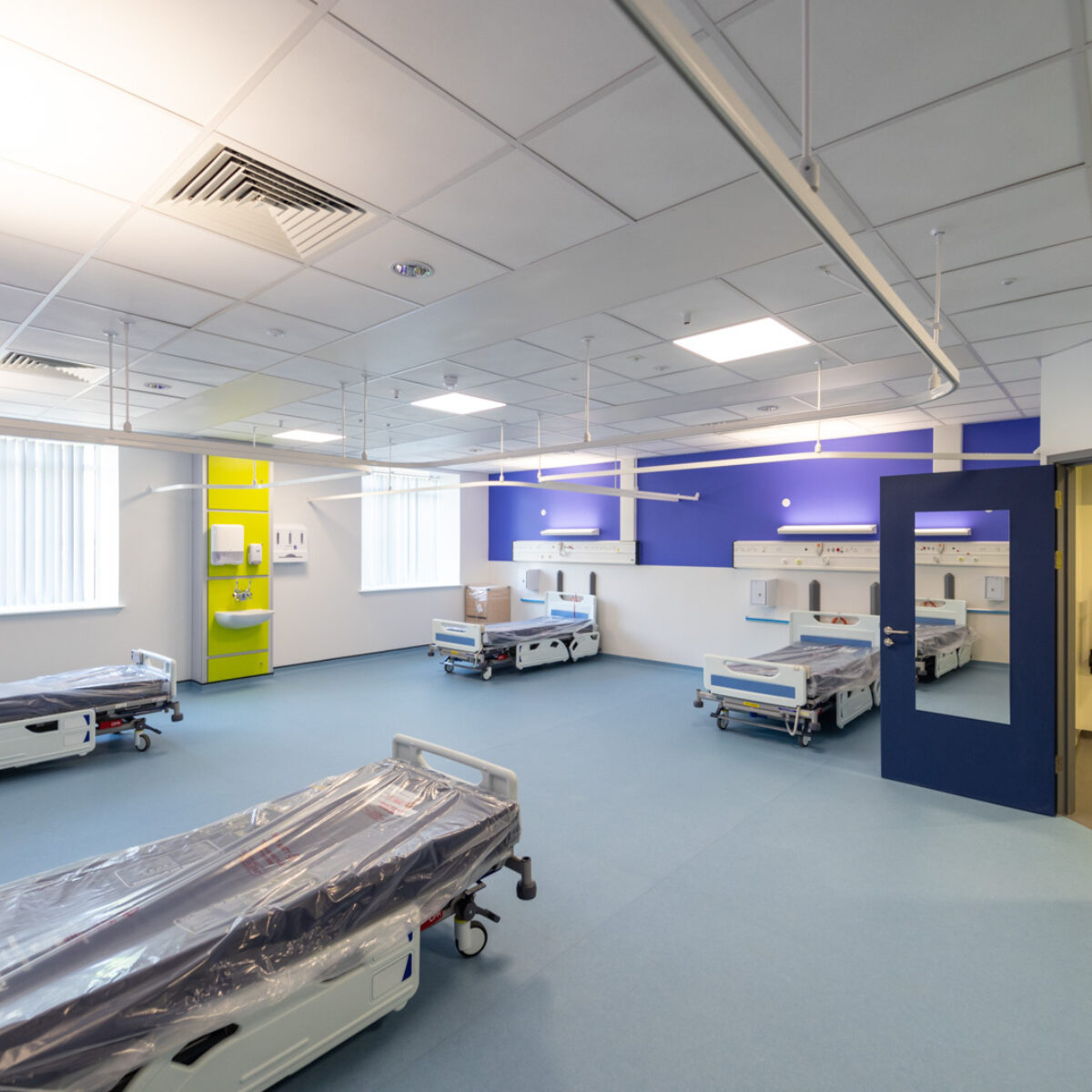
Vacuum technology - the solution for problematic hospital drainage systems
Renovating older, inefficient drainage systems can be both costly and time-consuming. This often leads to considerable disturbances such as noise and dust, and necessitates the closure of departments and rooms. Such disruptions are particularly problematic in hospitals, where continuous operation is essential. In the UK, this issue has become increasingly relevant over the last year.
The UK's National Health Service (NHS) is facing a critical issue with sewage leaks in many of its hospitals, reflecting the challenges of maintaining aging infrastructure. These leaks, reported by over half of the hospitals surveyed, pose risks to patient safety and highlight the urgent need for infrastructure repairs and upgrades.
The solution to the issues may lie in the recently completed vacuum drainage installation at Royal Cornwall Hospital in Truro.

Vacuum technology saved time and money at the Royal Cornwall Hospital
In The Cornwall Hospital's 18-bed Haematology and Oncology ward, vacuum solution replaced a previously problematic drainage system, resulting in substantial improvements. It started with an independent inspection at the Royal Cornwall Hospital which highlighted concerns directly related to drainage and sanitation, which required urgent attention.
Instead of embarking on the usual solution of open excavation drainage renewal, which involves significant upheaval and disruption, the hospital contacted our Jets Vacuum representative in the UK, Otter Vacuum, to advise on the suitability of replacing the existing problematic drainage installation with a Jets® vacuum drainage system.
After meetings and site inspections involving contractors BAM and TClarke, it was agreed to install a vacuum drainage system. It tuned out that this option was not only more cost-effective compared to traditional drainage replacement but also allowed for phased installation with minimal disruption to the hospital's normal operations, ultimately offering enhanced system flexibility post-completion.
As a result of this very successful initial installation and its proven operational robustness together with lowered maintenance costs, vacuum drainage was the natural cut and paste option for the proposed new MRI suite. This suite, comprising a 24-bed hematology oncology ward and associated facilities, was scheduled for completion in mid-2023.

BAM, the main project contractor alongside TClarke, the mechanical & electrical contractor responsible for the vacuum drainage installation, completed the project earlier this year. Following commissioning the hospital are looking forward to welcoming patients through the doors of their new facility.
Andrew Hay: Jets representative in the UK, Otter Vacuum, Director, said:
"Collaborating with the Royal Cornwall Hospital, BAM and TClarke on this current project, adding value at multiple levels has been interesting and rewarding, watching all those involved gain a better understanding of what vacuum drainage can offer each organisation individually and realising that it adds up to more than the sum of its parts, not only in project delivery terms, but in longer term operational benefits.”
As a bonus, Jets® vacuum solutions help to limit the spread of infections.
In addition to both time and money saved, The Cornwall Hospital also got a more hygienic solution than a traditional toilet.
A study published in the journal Physics of Fluids, revealed how a conventional gravity toilet creates what is essentially an invisible fountain of tiny droplets shooting up and out of the toilet bowl with every flush. These droplets can stay floating in the air long enough for the next person to enter a toilet cubicle.
By people breathing in these droplets or bioaerosols, or by touching the surfaces where they have landed, infections such as the coronavirus can spread rapidly. In a vacuum toilet, however, everything in the bowl, including odor and the potentially harmful bioaerosols are sucked down and safely transported away.
Read the article:
Photo at the top of the article: Courtesy of Tim Pestridge, BAM Construction.